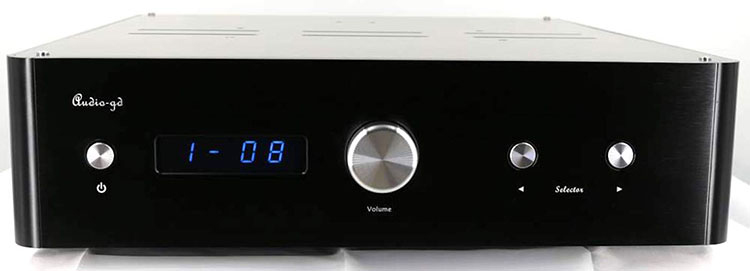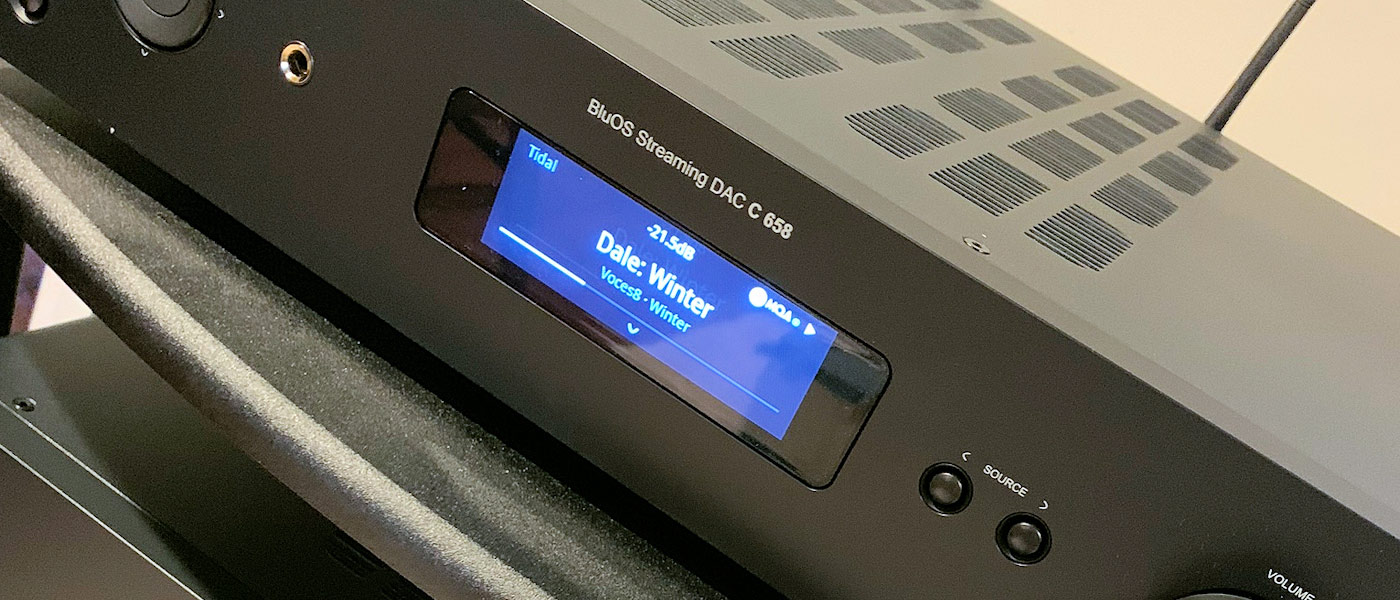
This is a highly unusual preamplifier. The Audio-gd HE-1 can naturally enhance the soundstage while still providing accurate tone. Most preamplifiers color their sound by an order of magnitude. There are no bells and whistles on this preamp, just a line-level analog preamplifier.
Audio-gd HE-1 Stereo Preamplifier
- The fully-regenerative power supply provides ultra-clean power
- Fully-balanced circuitry rejects noise
- All class-A circuits for reduced crossover distortion
- The Audio-gd HE-1 preamplifier makes enough wattage to drive a large power amp
- The screen is hard to read from across the room
- The preamplifier cannot be left on continuously due to excessive heat generation
- No DAC, no bass management, no tone controls, no phono section – line stage only
- No silver faceplate option – black only
- Available only direct from China
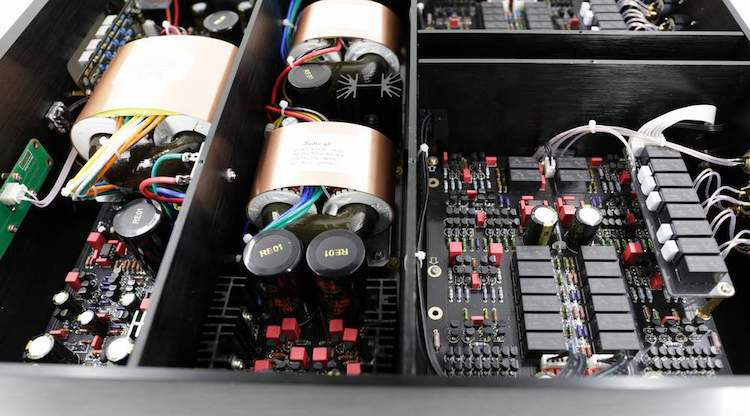
On the face of it, the Audio-gd HE-1 doesn’t seem like a very good investment. It has peculiarities – lots of them! There are no U.S. dealers, so if you want an Audio-gd product, you either buy directly from China, paying import taxes all the way, or buy used. There are no U.S.-authorized repair facilities, so if your preamp breaks, it gets shipped back to China. The unit runs so hot that the owner’s manual recommends against keeping it on for more than 10 hours straight. And yet, I think it’s worth every penny of its price. Why? Read on…
Signal to Noise Ratio:
130dB
Total Harmonic Distortion:
0.0005%
Frequency Range (XLR input):
20-20kHz + 0dB
100-100kHz + 1.5dB
1-300kHz +0, -3dB
Volume Characteristic:
100-step supper (sic) exponential volume
Gain:
+8dB (XLR) / +16dB (RCA)
Max Output Level:
9.5V (RCA) / 19V (XLR) / 4.8Ma (ACSS)
Output Impedance:
10 Ohms (XLR) / >10 MOhms (ACSS)
Input Impedance:
94 KOhms (XLR) / <5 Ohms (ACSS)
Channel Crosstalk:
130dB
Channel Imbalance:
0.01dB
Power Requirements:
100-120 VAC @ 50/60Hz
Power Consumption:
70W Class-A @ 230 or 120 VAC
Transformer Capacity:
260W (three transformers)
Unit Weight:
41.9lbs (19kg)
Unit Dimensions:
16.9” Wide x 17.7” Deep x 4.9” Tall
Included Accessories:
Power Cord, Remote Control
Manufacturer:
Audio-gd, XiangJing Road, No.15,
National Zoology Industrial Park,
Danzao ,NanHai Distric, Foshan City, Guangdong Province
China – 528300
www.audio-gd.com/
Warranty:
Full 10-year
Price:
$1,900 USD (not including shipping or import duties)
Shipping to U.S. (estimated):
UPS = $109 or DHL = $134
Import duties (estimated)::
$67
Total delivered cost (estimated):
$2,076
State Internet Sales Tax:
Varies
Company:
SECRETS Tags:
Preamplifier, Audio-gd, he-1, China, Audio-Gd He-1 Stereo Preamplifier Review 2019
- The McIntosh C49 Stereo Preamplifier
- The Conrad Johnson ET3 Tube Stereo Preamplifier Review
- The Audio Research LS28 Stereo Preamplifier Review
Many purchase a preamp based on brand, price, or the recommendation of a friend, reviewer, or salesman. The purchaser then plugs it into their system and blissfully considers the purchase a done deal. Other components may come and go, but usually, when one selects a preamplifier and said selection performs as expected, it’s never changed again unless it fails.
For most, “as expected” consists of providing enough switching for all the inputs that the user needs and delivering enough output to drive any associated power amplifier(s) to usable volume. Some prefer specific features such as a phono input or maybe tone controls, but generally, more thought and care is taken in selecting interconnects, for example, than is given to the preamplifier itself.
I contend and have always contended, that this benign acceptance of the preamp as “adequate” misses some important issues. The preamp is a relatively low-signal-level component and has a disproportionate impact on the sound of every source run through it. The colorations of the preamplifier (and EVERY preamp is colored) become what the user considers normal for their system, and the owner becomes accustomed to whatever colorations the preamp introduces. Like a tone control that you didn’t know was there, the preamp leaves its sonic signature on each and every audio source you select, and that sonic signature becomes so familiar to you that it disappears – until you remove it.
I’ve found again and again that the simple act of removing the preamp from the signal chain changes the sound startlingly (and often for the better). Now the technicians among you will quickly point out that I haven’t really removed a preamp from the system at all – the variable-volume source component has its own built-in preamplifier. Furthermore, the digital volume control typical of source components is often inferior to the analog volume control of a preamplifier. I agree with these factual observations, but I still note that time and time again, I’ve noticed an improvement in sound quality (and sometimes a startling one) when I remove the analog preamp from the signal chain and use the variable output source component directly.
This would argue that despite the handicaps of the source component (digital volume control and less robust analog output buffer amplifiers), there is more opportunity to mess up the sound with an analog preamplifier than not. I’ve also noticed that there is generally no correlation whatsoever between the technical specifications of a preamplifier and its sound. I’ve heard a few preamps with world-class specs that sounded worse than those with really terrible specs. So, it’s generally safe to say that the specifications you read DO NOT INDICATE what the preamp actually sounds like. Fact.
I’ve also noticed that the entire tube vs. solid-state argument somehow becomes totally moot when discussing preamplifier sound. I’ve heard tube preamps that sounded heavenly and tube preamps that sounded like dog soup. I’ve heard solid-state preamps that sounded stunning and others that that made me do nothing but yawn. What makes the difference? I don’t know. And that’s the hardest thing about preamplifiers. The only (ONLY) valid test is to listen. The brand doesn’t matter, the quality of the parts doesn’t matter, the differences between unbalanced and balanced circuitry don’t matter. The preamp will either sound like music or it won’t, and the majority, unfortunately, won’t. I’ve both bought and reviewed preamplifiers for DECADES and there were but a handful that sounded truly musical. It’s really embarrassing to get an expensive preamp on loan or on review and to find that it just isn’t any improvement over the variable-volume source component direct.
I’ll also say that most variable-volume source components are nothing to write home about either. But if you have a garbage-out source component, you shouldn’t expect any preamp to fix that situation. When I first got my OPPO UDP-205 disc player (or my first Emotiva Stealth DC-1 DAC), I found their sound so horrible that I couldn’t understand why anyone would consider listening to them. But once left on for a month to two, both changed their sound significantly and for the better. A friend’s Emotiva DC-1 DAC sounds great, and my OPPO isn’t too shabby either – and that’s while driving the power amplifiers directly!
Someone is bound to ask what my favorite preamps are. Although I could certainly tell you, I think that my all-star list probably won’t do you any good. Everyone has their own idea, apparently, of what recorded music should sound like, and my idea almost certainly won’t coincide with yours. I’d further have to note that some preamps that just didn’t sound good in my system have sounded spectacular when heard in someone else’s system. So, if it’s all relative, why bother writing this at all? I want you to consider (just consider) the possibility that your system has the potential to sound a LOT better than it does now, and that one of the main things holding back the true capabilities of your system just might be the preamplifier. I know it’s hard to swap out preamps – it isn’t like throwing in a new interconnect for a trial – but the potential improvements are significantly greater. The bottom line is that I’d like to persuade you to consider NOT running your preamp to failure before trying another. In fact, ask your friends if you might borrow their preamp for an evening just to hear it in your system. If they’re sane, they’ll tell you “no – it’s too hard to unhook,” but at least you tried.
Considering that the preamplifier is often the sound quality choke-point of your entire system, might it not be worth your while to consider alternatives? It was for me.
There are two general schools of preamplifier design – The “straight wire with gain” model and the “control center” one.
Many (most?) preamplifier designers subscribe to the straight wire with a gain model. This school, typified by the likes of PS Audio on the solid-state side, and maybe Audio Research on the tube side, goes for the theory that the preamp should never alter the sound of the source in any way – just amplify it. There are no tone controls, balance knobs, bass management, or digital inputs – just the unmodified, analog input signal at a higher output gain.
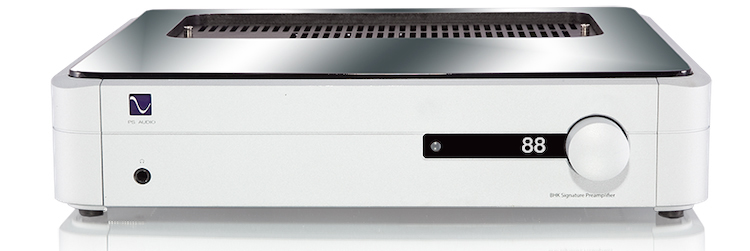
The other school of preamp design believes that the preamplifier should serve as the control center for the audio system and that the user should be accorded the ability to modify the sound to their liking. The McIntosh C53 typifies this type of thinking.

Notice the difference – the straight wire group wants you to end up with exactly what was on the recording; the control center group wants you to be able to tailor the sound to your space and your preferences.
You would think that the straight wire with gain purists would have the advantage in the preamplifier horse race, but in fact, the vagaries of loudspeaker performance and room interfaces can have huge impacts on the final sound. Sometimes the control center philosophy can produce better-applied results, sometimes not.
But beyond whether the preamplifier allows you to modify the frequency response of the source material or not, there is the more fundamental question of whether the preamplifier should strive to improve the source sound or just leave it alone. And this question brings us to the discussion of the Audio-gd HE-1 preamplifier.
Most preamplifiers, as I’ve stated, damage the sound in some way or another. Common damages include treble brightness, etched-sounding upper midranges and treble, softening or emphasis in the bass, and flattening of dynamics (not all in the same preamp, thank goodness!).
But even if you find a preamplifier that lacks the imperfections of the previous paragraph, as the HE-1 does, it won’t necessarily add anything to the experience. In other words, if you’re playing a poorly-recorded record or CD, it’ll still sound poorly-recorded, and your enjoyment of the music may suffer accordingly. Now, this is particularly unfortunate because a lot of music IS poorly recorded.
To compensate, many audiophiles favor preamplifiers that add a specific and very characteristic sound to overlay all the recordings that they play. Vacuum-tube-based preamplifiers often (but not always) do this. The overlay of tube sound can, in many cases, help disguise some of the more egregiously poor recordings. The purists, of course, say that what may help the worst of recordings can also damage the best of recordings. And although they’re right, listening only to good recordings can seriously limit your musical repertoire.
The Audio-gd HE-1 is one of those preamplifiers that has its own characteristic sound. This will disqualify it immediately for the purists who demand absolute fidelity to the source material. But what the HE-1 provides in lieu of absolute fidelity is quite beguiling. Unlike the tube preamplifiers that choose to lay on the second-harmonic distortion to sweeten the sound, the HE-1 sticks more closely (tonally) to the absolute fidelity side.
So, if the preamplifier doesn’t sweeten the sound, what changes does it make? The HE-1 seems to enhance the soundstage of every recording played through it. Wider, deeper, and more expansive are the descriptions that my friends use when they hear music through the Audio-gd HE-1 – somewhat like the old Carver Sonic Holography system, but not so extreme, and without the irritating side effects. I could also possibly liken the sound of the HE-1 to the Q-Sound recording methods that enhance soundstage.
Now purists will disparage such soundstage enhancement as being a distortion of the original program, and although that may be so, the effect is not only entrancing, but after a few minutes, it becomes natural to the brain, and you don’t notice it anymore. The HE-1 goes a long way toward making poorly-recorded material more enjoyable to listen to. You can still hear the recording’s flaws, but they aren’t so glaring. And curiously enough, the better the recording, the less the HE-1 seems to modify the source material. Well-recorded material (Paul Simon’s later works, for example) sounds much the same through the HE-1 as they do through a friend’s far more expensive and highly-accurate preamplifier.
Taking the HE-1 out of the signal chain and using just the internal circuitry of the OPPO UDP-205 reveals that the only detectable differences are the expanded soundstage of the HE-1 and some flattening of dynamics when the OPPO is used as a preamp. It is remarkable that the HE-1 can be that transparent. Every other preamp I’ve tried in my system changes the tonality of the music when inserted in the signal chain. The HE-1 doesn’t change tonality – only soundstage.

I’ve now used the Audio-gd HE-1 preamplifier with and without a JL Audio CR-1 crossover downstream, with a variety of power amplifiers, and with four different pairs of speakers. To make sure what I’m liking is being added by the preamp, I’ve periodically bypassed it, driving everything directly from the balanced, analog outputs of the OPPO UDP-205. And every time I go back to the OPPO, a sense of being in the original recording space is instantly and noticeably diminished if not totally lost.
Now, this is a conundrum. Was that dimensionality really there on the original recording, and it took the HE-1 preamp to bring it out – or is the OPPO’s output more accurate, and the HE-1 preamp is manufacturing the sense of space? I just don’t know. And since it’s impossible to listen to the preamp without an audio source upstream, I may never know. But I will say that of all the preamps I’ve owned previously, none has the effect on the music that the Audio-gd does.
Now, this brings up another issue as well. Can the majority of preamps I’ve owned and heard be right and still sound worse? I guess they can. I bring this up because in the Microrendu streamer discussions online, the proponents insisted that the device had more dramatic effects on poorer-sounding recordings. So, ultimately, perhaps you CAN put lipstick on a pig of a recording. Is this preamp doing the same thing?

And, ignoring all the above questions, how do I like the Audio-gd HE-1 preamp? At this point, you’d have to pry it out of my cold, dead hands to get it from me! Whether or not others care for the sound of this device, it continues to sound magical to me.
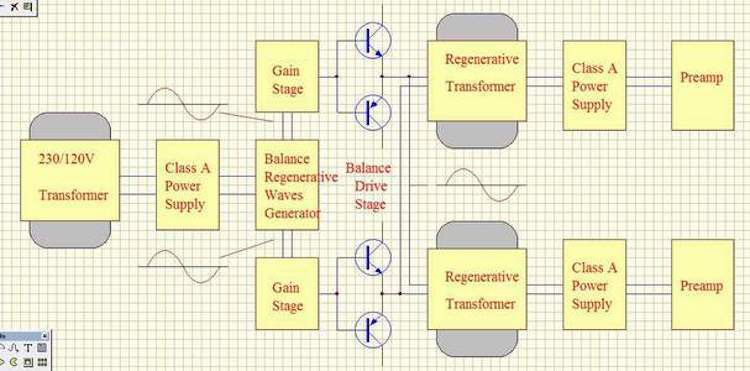
The Audio-gd HE-1 preamp has a plethora of unique design features including:
- All discrete amplification devices (no integrated circuits)
- Dual-mono, fully-balanced circuitry with each channel having its own discrete power supply transformer and downstream analog circuitry
- Krell CAST compatibility
- Single-Polarity FET buffer stages on inputs and outputs
- Fully regenerative AC power supply with three transformers
- Fully-balanced Class A design with no coupling capacitors
- ACSS (Audio-gd Current Signal System) analog stages with no feedback
- Separate Class A power supplies for each gain stage
- 4-channel, 100-step, laser-trimmed digital relay volume control for balanced channel tracking and closely-matched channel volume
- 5 analog input pairs
- 3 analog output pairs
- Supper (sic) Exponential Volume Characteristic
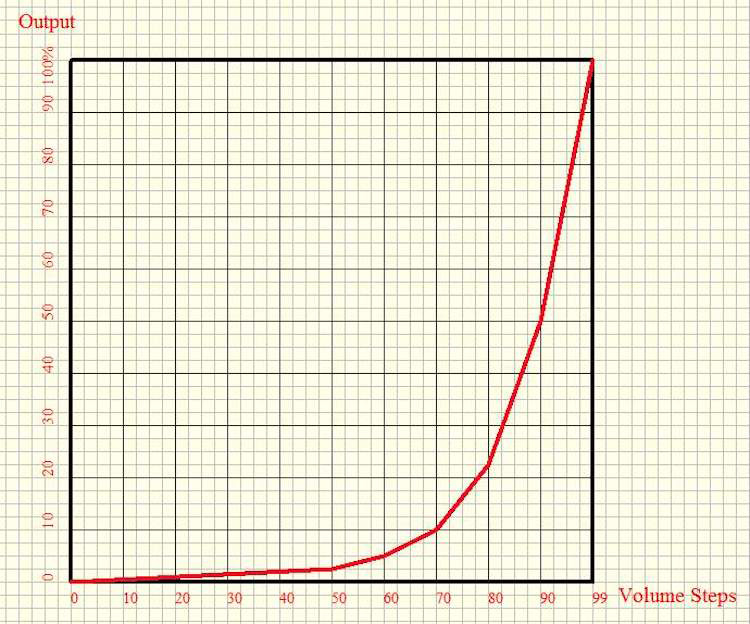
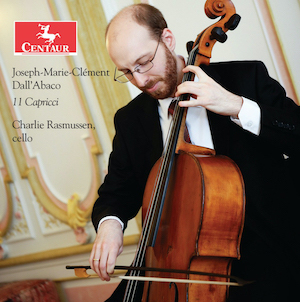
Of all the great Centaur recordings, this one is perhaps my favorite. The tone and ambient space around Mr. Charlie Rasumssen’s cello are distinct and clear. The instrument’s body resonances are wonderful to hear, and if your system lacks anything but a perfectly smooth bass response, the disc will reveal all your room’s peaks and dips in technicolor.

This first disc (to my knowledge) from Balkan Beat Box contains such wonders as “Cha Cha, Bulgarian Chicks, Adir Adirim, and Sunday Arak.” I’d call this “electronic world-music” if I had to slap a style on it. Judging from the subsequent success of the band, I’m certainly not the only one to appreciate their sound.

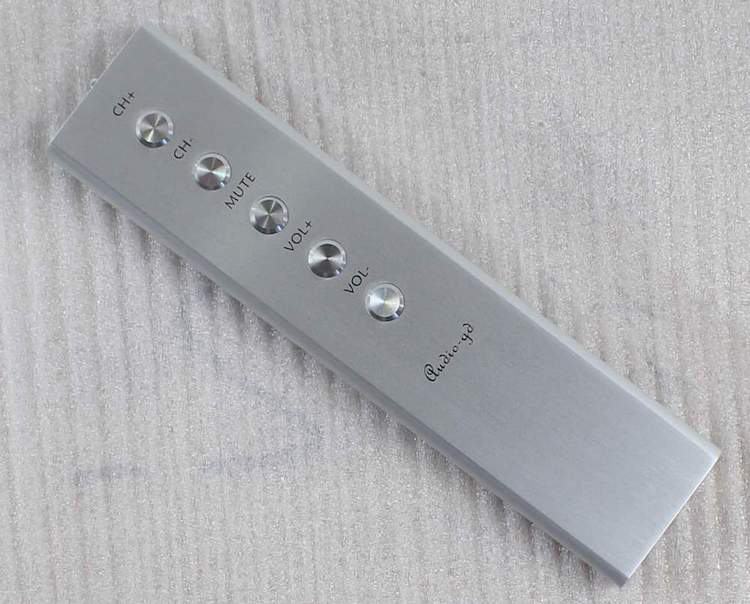
THE AUDIO-GD HE-1 PREAMPLIFIER is an amazing-sounding device that adds enjoyment to all my listening. I have made it a permanent part of my system.
- Unique sound-staging abilities that seem to enhance every recording
- Above-and-beyond construction and design decisions
- Takes my system to another level
- Like no other preamplifier I’ve heard
- Nice metal remote
- Better ventilation that would prevent heat buildup
- U.S. distribution and repair facilities
- Better English translation for website and manuals
The Audio-gd HE-1 is far from the average preamp in terms of design and marketing. This would be academic unless the preamp offered exceptional performance. But this preamp DOES offer exceptional performance, and that justifies its peculiarities. So, is the HE-1 (or other, more contemporary Audio-gd preamplifiers) for you? Obviously, there’s no way to tell without you hearing the phenomenon for yourself. But I’m definitely keeping mine!
